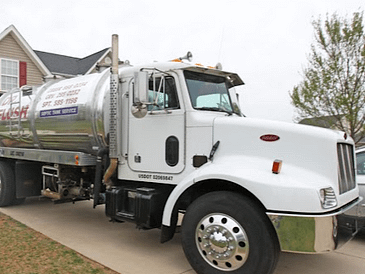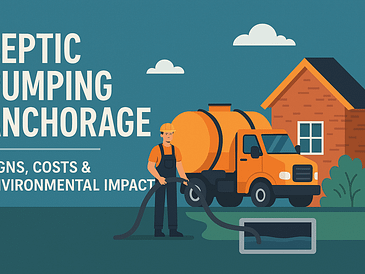Maintaining a septic tank is crucial for adequately functioning your home’s wastewater disposal system. Neglecting this essential component can lead to costly repairs, foul odors, and environmental contamination. To ensure your septic tank operates efficiently and lasts for years, following a set of do’s and don’ts is essential. This comprehensive guide will explore the best practices for septic tank care.
The Dos of Septic Tank Care:
1. Regular Pumping:
Schedule routine pumping every 3 to 5 years, depending on household size and water usage. This removes accumulated sludge and prevents it from clogging the drain field or causing backups in your home.
2. Conserve Water:
Be mindful of water usage to prevent overloading the septic system. Install low-flow fixtures, fix leaks promptly, and spread out laundry and dishwasher use throughout the week.
3. Use Septic-Safe Products:
Opt for biodegradable and septic-safe cleaning products, detergents, and toiletries to avoid disrupting the natural balance of bacteria in the septic tank. Harsh chemicals can kill beneficial bacteria and hinder the breakdown of waste.
4. Maintain Drainage:
Ensure proper Drainage around the septic tank and drain field. Keep gutters and downspouts directed away from the area to prevent excess Water from saturating the soil and compromising the system’s effectiveness.
5. Monitor for Signs of Problems:
Regularly inspect your septic system for warning signs such as slow drains, foul odors, soggy ground, or sewage backups. Addressing issues early can prevent costly repairs and minimize environmental damage.
6. Protect the Tank and Drain Field:
Avoid parking vehicles or heavy equipment over the septic tank or drain field, which can compact the soil and damage pipes. Plant grass or shallow-rooted vegetation to prevent soil erosion and absorb excess moisture.
7. Educate Household Members:
Ensure everyone in your household understands the importance of proper septic tank care and follows established water usage and waste disposal guidelines. Educating family members can prevent accidental damage and prolong the lifespan of your septic system.
The Don’ts of Septic Tank Care:
1. Don’t Flush Non-Biodegradable Items:
Never flush non-biodegradable items such as wipes, feminine hygiene products, paper towels, or plastic into the septic system. These materials can clog pipes, damage components, and impede the natural breakdown of waste.
2. Avoid Excessive Water Usage:
Limit water usage to prevent overwhelming the septic tank. Avoid long showers, running faucets unnecessarily, or using large amounts of Water in a short period. Excessive Water can flood the system and lead to backups.
3. Don’t Pour Grease or Oil Down the Drain:
Avoid pouring grease, oil, or fats down the drain, as they can solidify and clog pipes. Instead, collect grease in a container and dispose of it in the trash once cooled. Use a strainer in the kitchen sink to catch food scraps and prevent them from entering the septic system.
4. Refrain from Using Chemical Drain Cleaners:
Avoid using chemical drain cleaners to unclog sinks or toilets, as they can harm the beneficial bacteria in the septic tank. Opt for mechanical methods such as plungers or plumbing snakes, or use enzymatic cleaners specifically designed for septic systems.
5. Don’t Overload the System:
Be mindful of the amount of Water entering the septic system at once. Avoid doing multiple loads of laundry, running the dishwasher, and taking showers consecutively, as this can overwhelm the tank and disrupt the treatment process.
6. Don’t Ignore Maintenance:
Neglecting routine Maintenance and inspections can lead to costly repairs and system failures. Stay proactive by scheduling regular pumping, monitoring for signs of trouble, and addressing issues promptly.
7. Don’t Plant Trees or Shrubs Near the Drain Field:
Avoid planting trees or shrubs with deep roots near the drain field, as they can infiltrate and damage the pipes. Opt for shallow-rooted vegetation instead, and maintain a safe distance from the septic system to prevent root intrusion.
In conclusion, proper septic tank care is essential for the longevity and efficiency of your wastewater disposal system. By following these dos and don’ts, you can maintain a healthy septic system, prevent costly repairs, and protect the environment. Remember to schedule regular Maintenance, conserve Water, use septic-safe products, and educate household members on best practices. Your septic tank can provide reliable service for years with proper care and attention.
Importance of Professional Maintenance:
While following the do above and don’ts is crucial for the day-to-day care of your septic system, professional Maintenance is equally vital. Hiring a licensed septic tank professional for regular inspections and pumping ensures that your system remains in optimal condition and complies with local regulations.
1. Professional Inspection:
Schedule a professional septic system inspection every 3 to 5 years or as local regulations recommend. A qualified technician can assess the tank’s condition, identify any issues, and recommend necessary repairs or Maintenance.
2. Pumping by Experts:
Professional pumping is essential to remove accumulated sludge and scum from the septic tank. Attempting to pump the tank yourself without the proper equipment and expertise can lead to incomplete waste removal or system damage.
3. Repairs and Upgrades:
If your septic system shows signs of damage or deterioration during inspection, it’s crucial to address these issues promptly. Professional technicians can repair damaged components, replace worn-out parts, or recommend system upgrades to improve efficiency and performance.
Environmental Considerations:
Proper septic tank care protects your home’s wastewater system and safeguards the environment. Improperly maintained septic systems can contaminate groundwater, surface water, and soil, posing risks to human health and ecosystems.
1. Groundwater Protection:
Septic tanks are designed to treat wastewater before it percolates into the soil. However, leaks, cracks, or overflows can allow untreated sewage to seep into groundwater, contaminating drinking water sources and harming aquatic life.
2. Surface Water Contamination:
Excess nutrients and harmful pathogens from untreated sewage can enter surface water bodies, such as rivers, lakes, and streams, through runoff or groundwater discharge. This pollution can degrade water quality, harm aquatic ecosystems, and endanger public health.
3. Soil Degradation:
Septic system failures can lead to soil saturation and compaction, inhibiting the infiltration of Water and nutrients. This can result in soggy conditions, soil erosion, and vegetation loss, affecting both land productivity and ecosystem function.
Regulatory Compliance:
Compliance with local regulations and guidelines for septic tank care is essential to avoid fines, penalties, or legal consequences. Many jurisdictions have specific septic system installation, Maintenance, and operation requirements to protect public health and the environment.
1. Permitting and Inspections:
Before installing or modifying a septic system, obtain the necessary permits and approvals from local health departments or regulatory agencies. Regular inspections ensure the system meets established standards and operates safely and efficiently.
2. Reporting Requirements:
Some jurisdictions require homeowners to report septic system inspections, pumping records, or repairs to regulatory authorities. Failure to comply with reporting requirements can result in enforcement actions or penalties.
#### 3. Environmental Impact Assessments:
In environmentally sensitive areas or regions with vulnerable groundwater resources, additional environmental impact assessments or permits may be required for septic system installations or expansions. These assessments help mitigate potential impacts on natural ecosystems and water quality.
Conclusion:
Proper septic tank care and Maintenance are essential for the health and safety of your household, the environment, and regulatory compliance. By following the dos and don’ts outlined in this guide, scheduling professional inspections and Maintenance, and adhering to local regulations, you can ensure the longevity and efficiency of your septic system. Remember, responsible septic tank care is not only a homeowner’s duty but also a commitment to environmental stewardship and public health protection.





